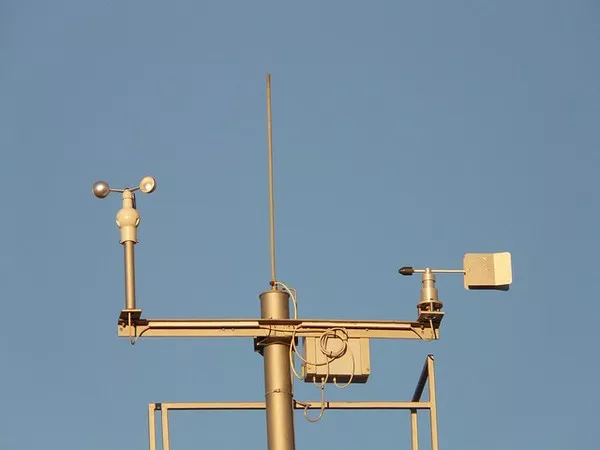Anemometers have long been associated with the measurement of wind speed, providing valuable insights for meteorologists, wind energy professionals, and aviation experts. However, the capabilities of anemometers extend beyond their conventional use, as these instruments prove to be invaluable in measuring flow across various industries. This article explores the versatility of anemometers and their application in the precise measurement of fluid flow.
Understanding Anemometers:
Anemometers are devices designed to measure the speed and direction of air or other gases. Traditionally, they have been crucial tools in weather stations, helping meteorologists analyze and predict atmospheric conditions. Anemometers operate on different principles, with common types including cup anemometers, vane anemometers, hot-wire anemometers, and ultrasonic anemometers.
Wind speed measurement is the primary function of anemometers, but their adaptability makes them suitable for broader applications. The ability to detect and quantify the movement of air particles renders anemometers valuable in various contexts, especially when it comes to measuring flow.
Anemometers in Flow Measurement:
The measurement of fluid flow is a critical parameter in industries such as manufacturing, energy, environmental monitoring, and research. Anemometers, with their inherent capability to assess the movement of air particles, find practical use in determining the flow characteristics of liquids and gases.
One of the key advantages of employing anemometers for flow measurement lies in their non-intrusive nature. Traditional methods often require physical intrusion into the fluid stream, leading to potential disruptions and inaccuracies. Anemometers, on the other hand, allow for contactless measurements, minimizing interference with the flow dynamics.
Applications in Industrial Settings:
In industrial settings, anemometers play a pivotal role in optimizing processes and ensuring operational efficiency. In the manufacturing sector, where precise control of fluid flow is crucial, anemometers contribute to maintaining optimal conditions. For instance, in chemical processing plants, anemometers assist in monitoring the flow of gases and liquids, aiding in the prevention of leaks and ensuring the safety of workers.
The energy sector also benefits significantly from the use of anemometers in flow measurement. Whether in oil and gas extraction or in the generation of renewable energy through wind farms, accurate flow data is essential for maximizing efficiency and minimizing waste. Anemometers help in assessing the performance of pipelines, identifying potential issues, and facilitating timely maintenance.
Environmental Monitoring and Research:
Beyond industrial applications, anemometers play a vital role in environmental monitoring and research. Studying air and water flow patterns is crucial for understanding the dispersion of pollutants, tracking the movement of airborne contaminants, and assessing the impact of fluid dynamics on ecosystems.
In environmental research, anemometers are frequently employed in studies related to air quality, climate change, and hydrodynamics. By precisely measuring airflow in various natural settings, researchers can gain insights into the dispersion of pollutants, the behavior of aerosols, and the influence of wind patterns on weather and climate.
Advancements in Anemometer Technology:
The evolving landscape of sensor technology has led to continuous improvements in anemometer design and functionality. Modern anemometers are equipped with advanced sensors, data logging capabilities, and wireless connectivity, allowing for real-time monitoring and remote data access.
Ultrasonic anemometers, for example, have gained popularity due to their high precision and reliability. These devices use ultrasonic pulses to measure wind speed and direction, offering a non-intrusive and maintenance-free solution for various applications, including flow measurement.
Challenges and Considerations:
While anemometers offer several advantages in flow measurement, it is essential to acknowledge certain challenges and considerations. The type of anemometer selected must align with the specific requirements of the application. Factors such as temperature, humidity, and the nature of the fluid being measured can influence the accuracy of the readings.
Calibration and regular maintenance are critical to ensuring the continued accuracy of anemometer measurements. Environmental conditions and external factors can impact the performance of these instruments over time. Rigorous calibration protocols and periodic checks help maintain the reliability of the data generated by anemometers.
SEE ALSO 10 Essential Uses of Anemometers
Conclusion:
In conclusion, the humble anemometer, originally designed for measuring wind speed, has proven to be a versatile instrument with applications extending into the realm of fluid flow measurement. Its non-intrusive nature, adaptability, and technological advancements make anemometers indispensable in various industries, from manufacturing and energy to environmental monitoring and research.
As industries continue to seek efficient and accurate methods for flow measurement, anemometers are likely to play an increasingly crucial role in ensuring optimal operations and resource utilization. The ongoing advancements in sensor technology and instrumentation will further enhance the capabilities of anemometers, solidifying their position as indispensable tools for understanding and managing fluid dynamics in diverse applications.

